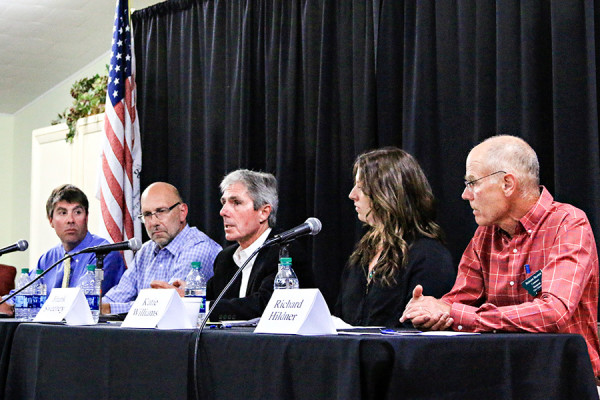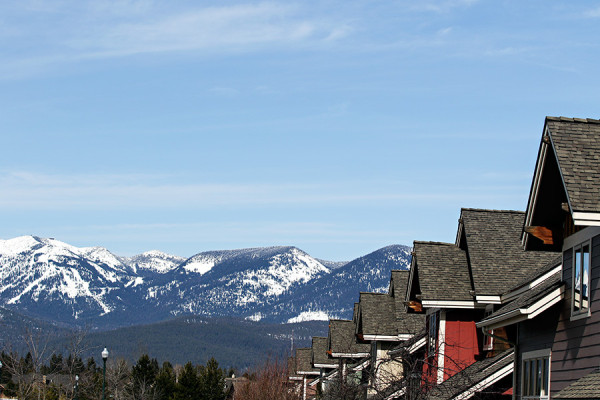The pressing need to solve Whitefish’s affordable housing shortage dominated the city council’s first meeting of 2016, when scores of business owners and community leaders lined up to address what they described as a looming crisis.
Representatives from the community ran the economic gamut – from the tourism and service industries to health care and retail services – and they all took turns sharing stories that illustrate the same point: The local labor shortage is symptomatic of rising housing costs and a diminishing inventory of affordable rental units.
Seasonal workers face a scarce rental inventory, while homeownership remains out of reach for young professionals looking to enter a market that towers above the average household income.
Housing costs in Whitefish are outpacing Flathead County and the state, displacing critical workers who fill the jobs driving Whitefish’s tourist-based economy. Meanwhile, professionals are forced to live outside of the community in which they work.
Catherine Todd, representing North Valley Hospital, said that out of 405 employees, only 36 percent reside in Whitefish, while 54 percent reside in Kalispell and Columbia Falls because they are priced out of the community in which they work.
Doug Reed, owner of the Whitefish Lake Restaurant at the golf club, agreed that the dearth of affordable housing has reached a crisis level, noting that some local restaurants were forced to close down certain nights of the week last summer because they could not staff their businesses.
The council responded by unanimously approving the allocation of up to $60,000 in Tax Increment Financing funds for a Workforce and Affordable Housing Needs Assessment and plan to study the community’s needs and identify possible solutions.
But before the motion passed, Councilor Andy Feury – a former mayor who is intimately familiar with the problem – spoke to the need for a community-wide paradigm shift, and the adoption of more welcoming attitude to high-density affordable housing complexes rather than the adoption of another study (which he nevertheless voted to approve).
“We can throw study after study after study at this problem and we are going to end up at the same place,” Feury said. “This has been true for 20 years and it is going to be true for the next 20 years unless we as a community change our mindset and are open to having density.”
The issue of Whitefish’s deteriorating housing stock was a prominent element identified in the City’s 1987 Urban Renewal Plan, and as it continues to persist after nearly three decades city officials are determined to settle on a solution.
“Here we are 28 years later and we still haven’t addressed the problem,” Whitefish Mayor John Muhlfeld told the Beacon. “We now have the opportunity to really do something about this, but it will require a fundamental shift community-wide in terms of embracing these kinds of development. If we continue down this path, it will erode the qualities that make Whitefish unique.”

Two weeks after the inaugural Whitefish City Council meeting of 2016, the first opportunity to take a step down that new path emerged.
On. Jan. 19, the Montana Board of Housing in Helena heard requests for federal tax credits for 19 affordable housing projects across the state – a colossal ask that totaled $87.8 million. With only $26.9 million in federal tax credits available to build or rehabilitate rental housing for low- to moderate-income residents, however, only eight of the applicants were awarded tax credits.
The Whitefish Housing Authority was among those who narrowly missed out on the tax credits – specifically, $6.7 million over 10 years to build a 36-unit affordable housing complex on U.S. Highway 93 South, just north of Les Schwab Tires. Spearheaded by the Portland-based Common Wealth Companies, the proposed project would have added 36 affordable housing units to the community, with second-phase plans that would have included an additional 36 units.
However, the project was contingent on receiving the tax credits.
As executive director Lori Collins puts it, losing out on the credits made for a “very sad day.”
“That alone would have been a very big drop in the bucket, and it came as a very big blow to the affordable housing stock,” Collins said.
Bruce Brensdal is executive director of the Montana Board of Housing, which faced one of the most competitive years on record for its Multifamily Housing Development tax-credit applications. Last year, the board received eight applications and could only afford to award six of them, he said, underscoring the growing need across the state.
“I can tell you that of the 19 projects that were on the agenda, every one of them would have merited funding if we had the money,” he said. “But we have an interest in tax credits that is three times the amount that we have to give out, if not more. And that is becoming fairly consistent in recent years.”
Daryn Murphy, of Commonwealth Companies, appeared before the Board of Housing at its Jan. 19 hearing to make the case for the Whitefish project application, and in doing so noted that it received heavy resistance from residents in the adjacent River’s Edge community.
Everyone agrees that more affordable housing is a critical need in Whitefish, he said, but nobody wants it in their own backyard.
Specifically, the residents who opposed the density of the project stated in letters to the board that, while they agree with the need for affordable housing, the city’s use of blended density to accommodate the proposed housing subdivision would negatively impact their quality of life, as well as their home values.
That wasn’t what they signed on for when they invested in the property, residents wrote.
Murphy said it’s a stumbling block developers encounter again and again in Whitefish.
“We are going to have opposition wherever we try to develop in Whitefish,” Murphy told the board. “It is a very difficult place to develop, but the need is there. Hundreds of jobs are going unfilled because people have no place to live, and it is impacting economic development and impacting small businesses.”
“The need for affordable housing certainly hasn’t gone away,” Murphy told the Beacon. “I think the need is getting greater by the day. Unfortunately, without the funding from the state we can’t move forward with the project we were proposing.”
Brensdal said he was aware of the opposition to the Highway 93 project – the board received some 20 letters – but that he didn’t believe it played a role in the board’s decision to deny Whitefish the tax credits.
“To us, the comments weren’t really relevant,” he said. “We just can’t afford the credits for all of these projects.”
That may be the case, Collins, of the Whitefish Housing Authority, said, “but it certainly didn’t help.”
“The bottom line is we need affordable housing and there is only a finite amount of land in this town. And if we are going to be turned away from every piece of land that is feasible, we are never going to solve this problem,” Collins said.
Still, she said the city is taking proactive steps to address the crisis by establishing an affordable and workforce housing task force to spearhead the issue.

Whitefish Chamber of Commerce Executive Director Kevin Gartland has been bringing a diverse slate of stakeholders to the table to inform the task force’s meetings, and said drawing more recognition to the scope of the problem is a good first step, even if it’s overdue.
“It is an issue that has been a long time coming, and we are at a critical point,” he said. “We are talking about every category of income and every type of job on the spectrum. These are not just dishwashers. These are nurses, firefighters, entrepreneurs, professionals earning good incomes. But if you are making $70,000 a year and can’t buy a house for less than $400,000 it is still unaffordable to you.”
Robert Horne, Jr. of Applied Communications, LLC, a local community-planning firm, illustrated that widening gap at an affordable housing summit organized by the Whitefish Chamber and Montana West Economic Development last September.
Horne noted the average home price in Whitefish is nearly twice that of a home in Flathead County as a whole. According to the data, in 2015 the average price of a home in Flathead County cost $235,500, whereas the average price of a home in Whitefish cost $410,795. The data also shows a significant spike in home prices in Kalispell and Columbia Falls between 2014 and 2015. In the first half of 2015, the median price of homes in Kalispell was $203,500, a 6 percent increase over the same time period the previous year. In Whitefish, the median price of homes for the first half of 2015 was $307,450, a 7.9 percent increase over the same time period the previous year.
Whitefish also has some of the highest housing costs for renters. According to U.S. Census data, the average renter pays $812 a month in Whitefish, whereas the average renter in Kalispell pays $731.
“The retirement haven that we have become has really inflated land values to the point that the folks who work here and keep our economy going are being priced out of the market,” Gartland said. “They are moving elsewhere and so they are living elsewhere. We have to look after our own.”
Without these workers living in town, Muhlfeld said, Whitefish won’t be the same community that makes it an attractive place to call home in the first place.
Muhlfeld said the best tool the city has to help with this problem is to devote TIF funds to the acquisition of property and the installation of infrastructure to promote affordable housing development.
“That is the biggest tool the city has in its quiver right now to help solve this problem,” he said. “And it is something we are looking at seriously, but we need everyone on board.”
